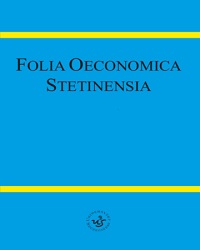Development of Tourist Traffic in the Regions of the European Union in 2000–2015 – A Spatial and Temporal Analysis
Development of Tourist Traffic in the Regions of the European Union in 2000–2015 – A Spatial and Temporal Analysis
Author(s): Marek Szajt, Marian ZawadaSubject(s): Supranational / Global Economy, Economic development, Tourism, Socio-Economic Research
Published by: Wydawnictwo Naukowe Uniwersytetu Szczecińskiego
Keywords: tourism; region; space-time model;
Summary/Abstract: Tourism is a significant branch of the service sector in the economies of the European Union. The evergrowing role of tourism ‒ as a result of wage increases and the prolongation of free time ‒ is reflected in many studies. For selected countries and regions characterized by appropriate conditions for tourism development and often accompanied by the lack of other developed sectors of the economy, this is an alternative, for others it complements the service offering. In each case, this phenomenon is worth investigating. The aim of this article is to identify similarities and differences in the tourist development of individual regions of the European Union, taking into account selected factors determining these differences. The study uses a spacetime model estimated using GRETL and Eviews. EUROSTAT data for 265 regions at NUTS2 level (without oversea French territories) for 2000‒2015 were used based on availability for selected areas. In addition to the data on tourism intensity, the data on the wealth of the population and their demographic characteristics were taken into account. The results should be helpful in developing regional tourism development strategies.
Journal: Folia Oeconomica Stetinensia
- Issue Year: 18/2018
- Issue No: 1
- Page Range: 82-92
- Page Count: 11
- Language: English

